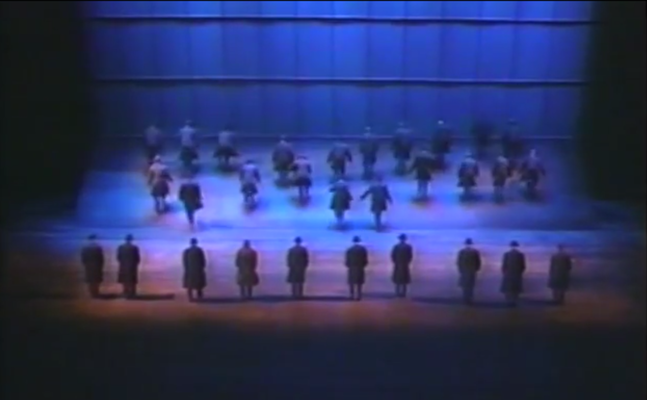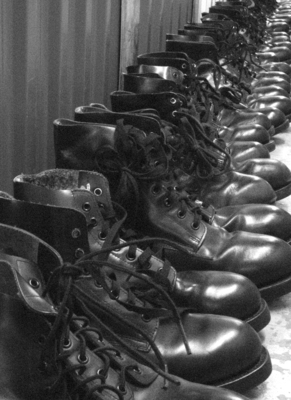Teachers can use these excerpts to continue the discussion about Joe. The texts provide additional information, highlighting particular aspects of the work, or echoing observations made by the students.
Do the students agree with these interpretations? Do the interpretations correspond with their own reading of the work?
Please note that it is preferable to make these texts available to the students once the appreciation activity is well under way.
Aline Gélinas, (1956-2001) journalist and critic :
“Joe was created in 1983 with a group of students in the Dance Department of the Université du Québec à Montréal, in Marie-Gérin-Lajoie Hall. It created shock waves in the student audience. Again there were shock waves when the piece was remounted using professional dancers, first in 1984 in the same venue, and then in 1989 at the Théâtre Maisonneuve in Place des Arts. In addition to its inventive form, the piece evoked the human condition with singular and poignant intensity. Joe, everyman, represented all of humanity. The dancers, their bodies disguised by a flowing overcoat, a hat pulled down around their eyes, and heavy boots, vied with each other in anonymity in an attempt to express the essence of the human race and its limitations.” Jean-Pierre Perreault, choreographer, Montreal, Les Herbes Rouges, 1991, p. 9
Jean Gervais, lighting designer and close Perreault collaborator :
“It was Joe that brought about real communication. I realized that for Jean-Pierre, lighting meant both light and shadow. Perhaps because of his pictorial instinct, his characters always have a dark side: they are not transparent. Light cannot reveal them completely: they remain mysterious. (…) With Joe, then, this principle was established between us, not put into words but harboured deep within us, that showing the spectator everything didn’t guarantee that he would see. Instead, it must be decided for him what there is to see, how he must see it and event which of a hierarchy of things he should be drawn to more than others.” Jean-Pierre Perreault, choreographer, Montreal, Les Herbes Rouges, 1991, p. 48
Josette Féral, professor at the theatre school, UQAM, stated that Joe is: “the clone of our individuality lost in the masses, of our urban wanderings, of our aborted attempts at self affirmation, but also of our fascination for the group and our deep but futile desire to escape the crowd, a crowd which always succeeds in imposing its laws, its rhythm, its time, its deafness, its mechanisms.” Jean-Pierre Perreault, choreographer, Montreal, Les Herbes Rouges, 1991, p. 87-88
Sylviane Martineau, performed in numerous Perreault works including Joe, and observed that “the clumsy, limping movements take their natural place next to graceful and controlled movements. Technical prowess is camouflaged behind gesture. Almost impossible sequences of movement are followed by simple marching, immobile silences and everyday poses.” Jean-Pierre Perreault, choreographer, Montreal, Les Herbes Rouges, 1991, p. 41










